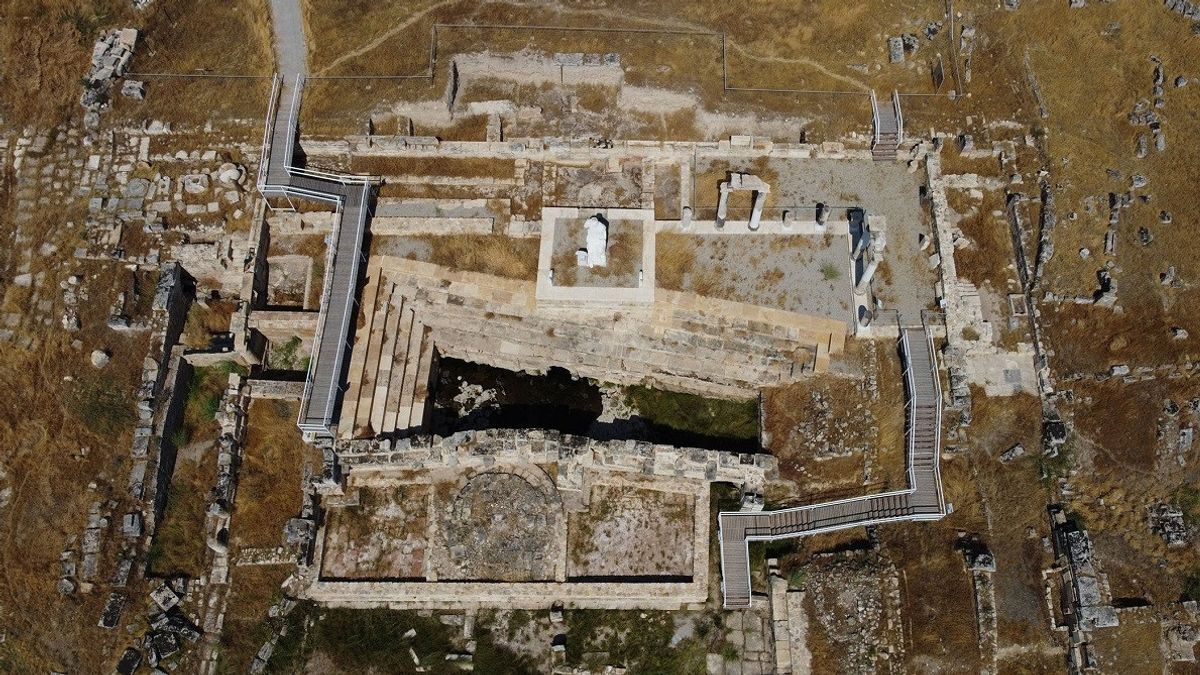
JAKARTA - Turkish authorities opened the famous archaeological site in Denizli Province, the 'Gate of Hell' to its first-time regular visitors, on Monday this week.
Reaching 'hell', or rather its gates, since the area outside the gates is closed to visitors, is no easy feat, as it is situated amongst the vast ruins of the Ancient City of Hierapolis.
If it weren't for the signs, such as the statue of the Greek God Hades and his three-headed dog Cerberus, the guardian of the gates of hell in Greek mythology, one could easily get lost while searching for the 'Gates of Hell'.
While the pristine travertines of Pamukkale (Cotton Castle) located a few kilometers away may be more tempting to those wishing to bask in the beauty of the world, the gate, which was fully explored in 2013, is likely to have quite a number of visitors.
Its name comes from a combination of mythology and the practical application of scientific facts. Thousands of years ago, sacrificial animals were sent to a narrow entrance in the land to be sacrificed in honor of the gods.

A 2013 study led by Italian professor Francesco D'Andria found that high levels of carbon dioxide emitted from the ground where the gate is located is a source of animal death. Indeed, the region is actually a combination of 'heaven and hell', as carbon dioxide emissions come from the same hot springs, which give Pamukkale travertine its beautiful white color.
After the 2013 expedition, the area was closed for safety reasons over toxic emissions unknown for centuries, as the phenomenon was confined to the 'gateway' and largely forgotten.
Further excavation work was carried out before the collapsed stones of the gate were restored, statues erected on the terrace-like structure next to the gate. A walkway placed at a safe distance from the gate.
For Muharrem Aldıbaş, a tour guide, the Gates of Hell itself is a special place.
“I had long thought it would open for early visits. This place is an opportunity to attract more visitors to Pamukkale,” he told Demirören News Agency (DHA), citing Daily Sabah June 21.
"It was believed in ancient times that Hades would spend half a year on Earth and the rest in the underworld, traveling to the underworld through this gate. I think more people will hear this story and come here," he said.
Meanwhile Hatice entürk, a visitor from the northwestern province of Bursa said he was aware of the gate's existence and decided to pay a visit after touring Pamukkale.
"It's an amazing place and I'm delighted to be one of the first visitors here," he said.
The English, Chinese, Japanese, Arabic, and French versions are automatically generated by the AI. So there may still be inaccuracies in translating, please always see Indonesian as our main language. (system supported by DigitalSiber.id)












